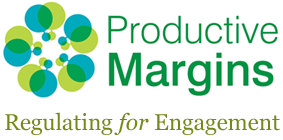Thurs, 17 May 2018, 12.30pm-5pm
Pegg Studio Theatre
University of Bristol
The Richmond Building
105 Queens Road
BS8 1LN
Introduction
Regulation intersects with the arts in myriad ways – from the planning and policy issues surrounding art in the public realm, to the bureaucracies that fund and manage art, to the discourses that seek to close down art’s infinite ambiguities and expressions, to the material networks that enact ‘art’, to the cultural practices that segment art into different economic regimes; from art world to pop chart, to the divergent interests of community organisations and university researchers as they seek to appropriate and use art and artists to achieve multiple ends.
About the event
In this event we discussed the diverse claims that are made about art and society, with the aim of focusing on regulatory contexts. Art is embedded within a discourse that values democratic access to the means of production. Art is also positioned as having a range of positive impacts, including health and well-being, social justice, harm reduction in young people, and urban regeneration. The ‘art’ signposted in these claims embraces a range of forms, including state-funded opera, community-based participatory visual arts, and experimental performance practice-as-research.
This art happens across sectors, too, from fully independent creative industry practice through to academic-artist-community collaborations and institutionally embedded artist-researchers. It is funded through a mix of state, charity, research council, private individual, and corporate sources.
A kaleidoscope of academic disciplines is represented within academic-artist-community collaborations, including visual arts, cultural policy, sociology, education, childhood studies, medicine, theatre, media studies. Questions about what art does in these situations and its value as art therefore remain critical.
Key Questions
During the event we discussed these key questions:
- How is art regulated in and by participatory and/or collaborative research?
- How does art itself (its aesthetics, institutions, funding, infrastructures) regulate the collaborative research in which it participates?
- How might art participate in productive critiques of regulatory systems and infrastructures?
- How might art contribute to developing new regulatory forms that involve people in decision-making?
- How might artists, community organisations, community participants, university researchers (including arts-based practitioner-researchers), funders, policy makers, curator-producers, and arts organisations work productively and collectively to support diverse and critical arts practice as a form of prefigurative politics?
We began a process of detailing these myriad regulatory regimes and surfacing the tensions and productive dissensus that art is so good at generating.
While at times we became bogged down in old conversations about what is / is not art or is / is not allowable / sayable / do-able, we made some progress in terms of thinking about how art and regulation intersect and how regulation enacts and produces different art forms.
Respondents contributed the following PDF texts, while critical friends spoke into this space.
Respondents
- Amanda Ravetz (PDF, 63 kB)
In absentia, Manchester Metropolitan University - Eva Elliott (PDF, 43 kB)
Productive Margins, Cardiff University - Glenn Davidson (PDF, 283 kB)
Artstation - Helen Manchester (PDF, 44 kB)
Productive Margins, University of Bristol - Julie McCalden (PDF, 539 kB)
Juliemccaldenlden.co.uk - Kate Rich (PDF, 99 kB)
Bureau of inverse technology - Matthew Brown (PDF, 39 kB)
School of Modern Languages, University of Bristol - Paul Hurley (PDF, 58 kB)
Man Food Project; Paulhurley.org - Paul O’Neill (PDF, 75 kB)
Publics, Helsinki, editor of How Institutions Think: Between Contemporary Art and Curatorial Discourse - Sophie Mellor
Close & Remote - Stephen Pritchard (PDF, 57 kB)
Colouring In Culture - Steven Hadley (PDF, 56 kB)
@mancinbelfast - Sue Cohen (PDF, 65 kB)
Productive Margins, University of Bristol
Invited critical friends
- Ali Roche
- Allan Herbert
- Angela Piccini
- Bernadette Buckley
- Chris Coppock
- Estella Tincknell
- Debbie Watson
- Emma Roe
- Glenn Davidson
- Helen Cole,
- Helen Thomas
- Jacqueline Maingard
- Karen Mackinnon
- Laura Pye
- Lucy Badrocke
- Lucy Woollett
- Lydia Woolridge
- Mandy Rose
- Mel Jones
- Morag McDermont
- Naomi Millner
- Nicole Foster
- Patricia Brien
- Paul Clarke
- Paul Hurley
- Rod Dickinson
- Shawn Sobers
- Stephanie Bolt
- Tim Cole
- Tom Sperlinger









